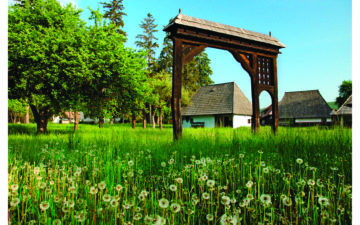The museum of Csernáton was named after its founder, Haszmann Pál in 1999. Haszmann Pál (1902–1977) and his wife, Cseh Ida (1909–2003) donated their private collection to the museum. Their dream of opening a museum could not have come true without the help of a large number of sponsors and enthusiastic people. The work started by them was passed on to their sons and other members of the family.
Apart from the Damokos Gyula mansion, the museum also occupies the park and the yard belonging to the premises. In the years between 1950 and 1970 the mansion was totally neglected, and reached a deplorable condition. In order to save the building from total destruction, the officials of that time decided to open a museum, a cultural center in it. The mansion was built during the 17th–19thcenturies, and its exterior was finished in neoclassical style in 1831. The building with several rooms and the area of more than two hectares surrounding it proved to be ideal for a village museum. The institution was opened to the public on 25 February 1973.
Besides the village museum, the Folk High School of Csernáton and theBod Péter Educational association were also opened on this date.
Several Szekler houses, Szekler gates and a water mill – each of them a typical piece of the Szekler architectural heritage – have been transported to and rebuilt on the area surrounding the museum, which is why the institution can be regarded as an open-air village museum. Another important part of the collection provides information on the cultural history of the region as well as on biographical data of several outstanding personalities. The busts of two personalities of great importance – Bod Péter and Végh Antal – can be seen in the yard of the museum.
The exhibition of old agricultural tools and machinery comprises some of the most valuable items of the collection, giving an insight into the farming techniques used in Háromszék in the past centuries. One can see old steam engines, threshing machines, tractors, motorized engines, soil cultivating machines and some unique tools used in agriculture.
The vaulted cellar of the Damokos mansion, which dates back to the late Middle Ages, hosts the exhibition of cast iron craftwork, the “stove museum”. The oldest items were manufactured in the 17thand 18thcenturies, but the bulk of the collection dates back to the 19thcentury, the heyday of Transylvanian cast-iron handicrafts.
The exhibition of technical history is a valuable collection of antique radios. The oldest radio sets are those with crystal detectors and earphones. Among the multitude of radio receivers, one can also see different devices for recording and reproducing sound, gramophones, pathéphones, antique telephones dating back to the 1920s and 1930s. More than eighty percent of the items are still operational, so visitors can also listen to their sounds.
Apart from the museum, the mansion hosts the Folk High school of Csernáton, which is open from April to October, and welcomes young people interested in traditional handicrafts such as wood carving, furniture painting, felting, spinning and weaving, carpentry as well as building and carving Szekler gates.
Contact:
Haszmann Pál Ethnographic Museum
527070 Cernat, nr. 330., Covasna county
E-mail: [email protected]







